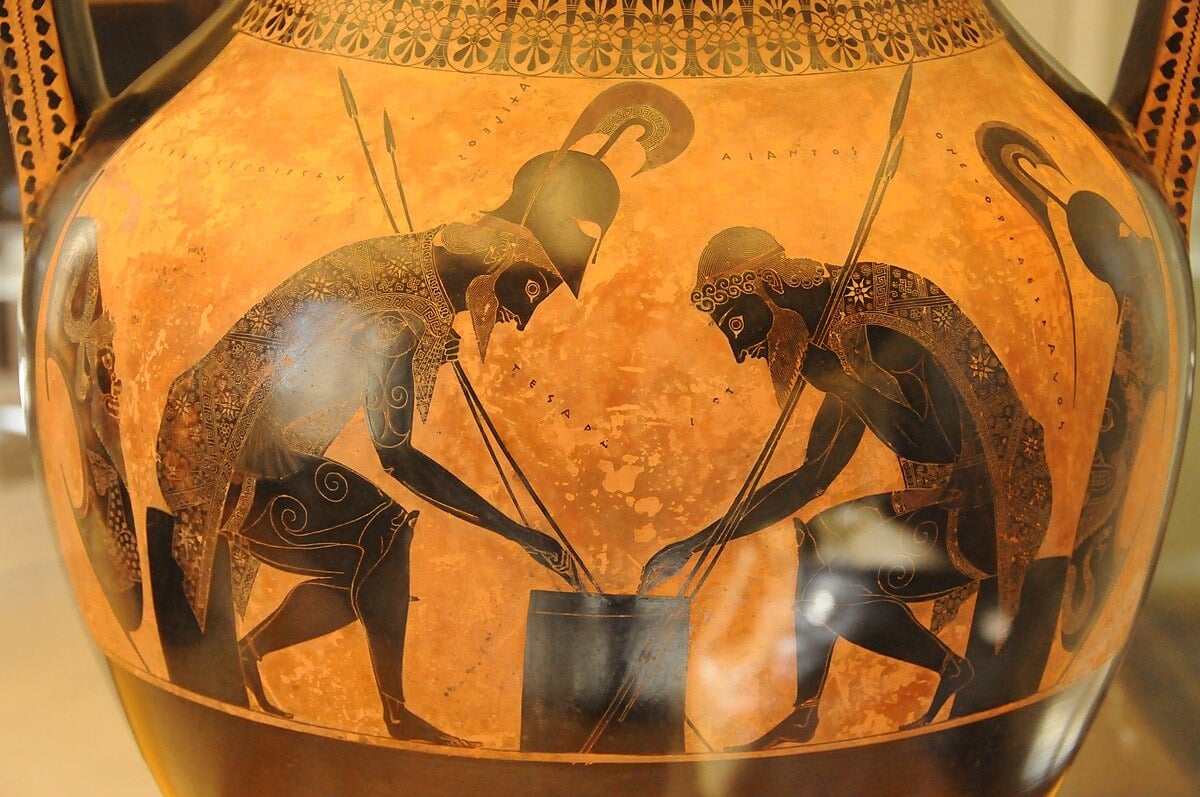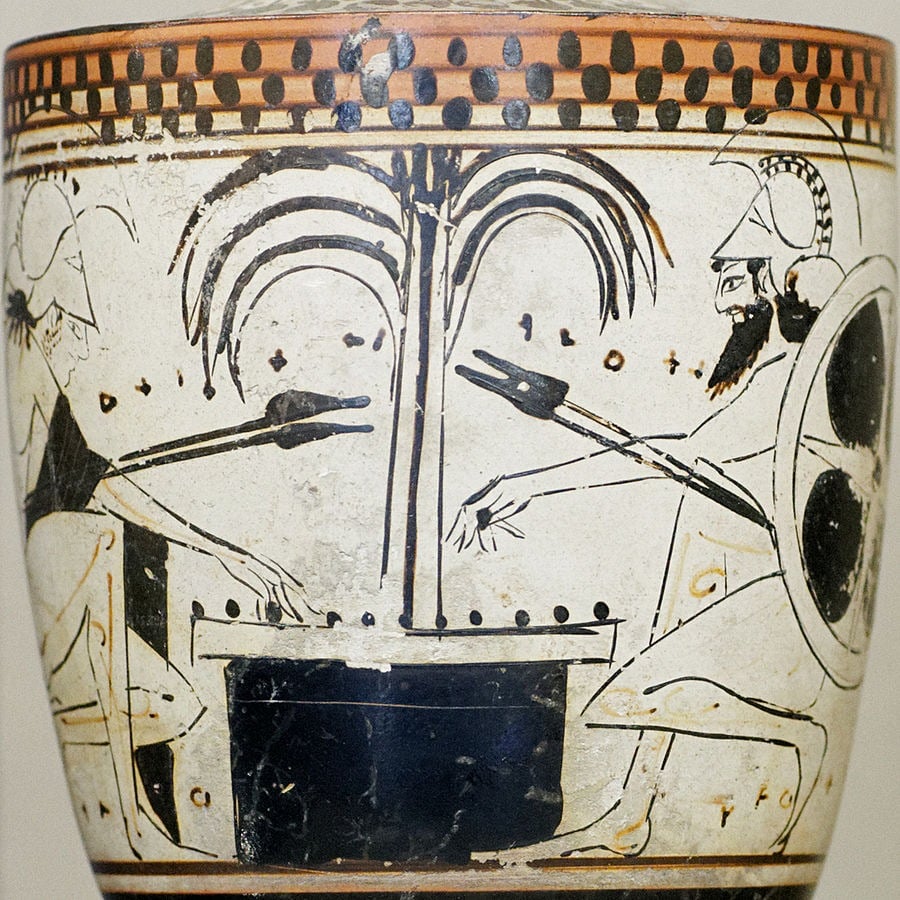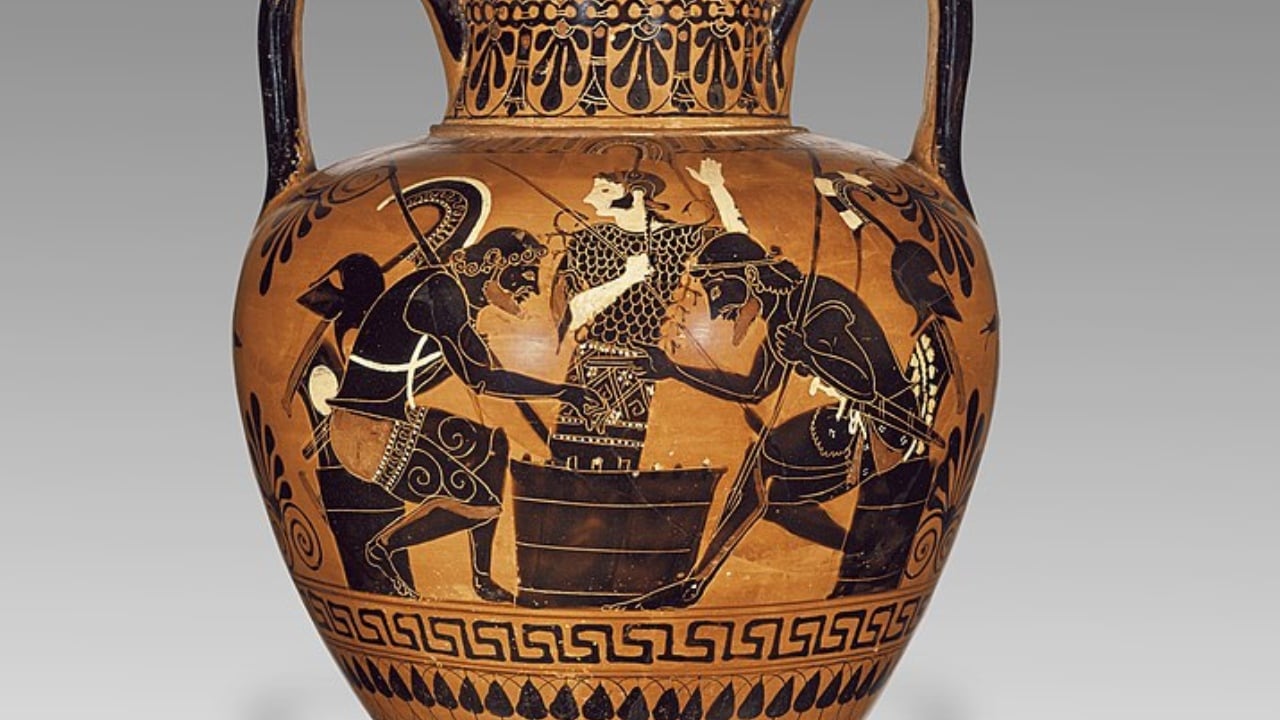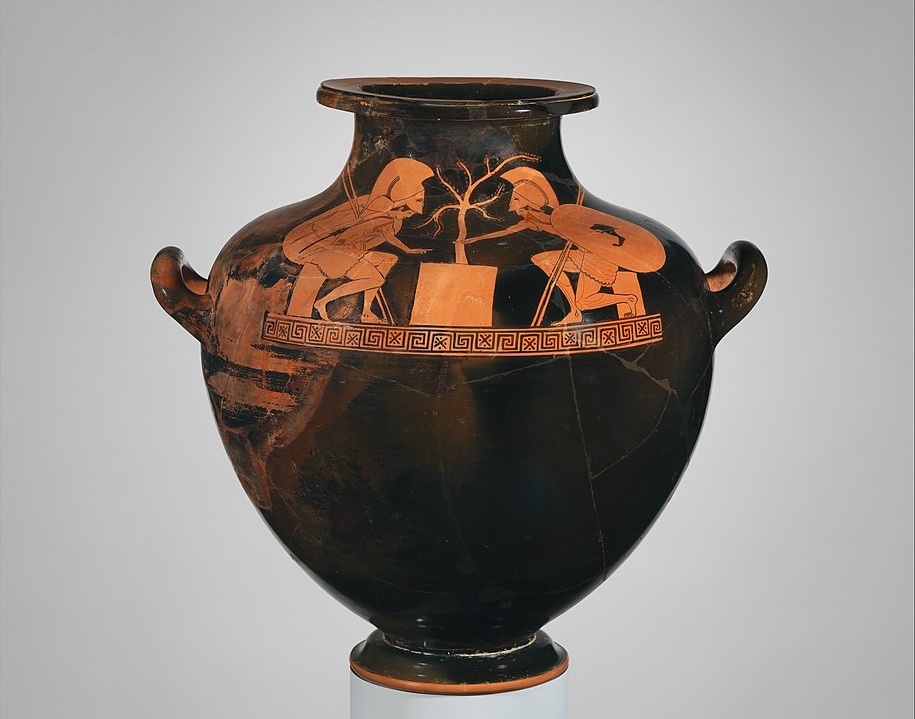
To pass the time the ancient Greeks played various board and dice games which have been attested to in various literary and pictorial sources.
Greek poets and philosophers frequently attributed board games and children’s activities to divine creations, symbolizing essential moral lessons and serving as powerful metaphors for governing a state.
These games were believed to embody the wisdom and teachings of the gods, imparting valuable knowledge and virtues to those who engaged in them. In more ordinary terms, one can imagine friends gathering at the agora (market) to while the time away playing a favorite board game or soldiers throwing dice to keep boredom at bay during a long campaign.
Pesseia/Petteia
Known as “Pesseia,” also referred to as “Petteia,” this ancient board game holds a significant place in Greek literature, capturing the imagination of poets and philosophers alike. Often mistaken for the Roman game “Latrunculi” in later times, Pesseia was attributed by Plato to the divine creation of Theuth, the Egyptian god of knowledge, adding a sense of sacredness to its play. In Homer’s epic, the Odyssey, the suitors of Penelope engage in this game, referred to as “draughts” or “checkers” in modern translations.
While the complete rules of Pesseia remain elusive, historical records reveal that it was played on rectangular boards, each player commanding groups of pieces equal in number. The objective involved flanking the opponent’s pieces on both sides to eliminate them. Scholars generally agree that the ultimate goal was to either eliminate or trap all the pieces of the opposing player.
Today’s recreationists tend to favor using eight-by-eight boards, each player having sixteen pieces that can move one step in any direction at a time. However, these modern adaptations lack substantial evidence from primary sources.
As time passed, the game underwent changes, particularly as it was embraced by the Romans. Some versions incorporated a “leader piece,” possibly influenced by elements from newly introduced games brought in by Eastern traders. Unraveling the game’s history poses challenges due to the discovery that Greeks applied the same name to various iterations throughout the centuries. Nonetheless, the enduring fascination with Pesseia demonstrates its enduring legacy as a game of strategic prowess and timeless allure.

Pente grammai/“Five Lines”
Pentre Grammai, a beloved board game in Ancient Greece, particularly in Attica, has left a rich archaeological trail, with its images discovered in numerous excavations, including temple floors. The game’s popularity is evident from over one hundred and sixty Attic vases featuring depictions of legendary figures Achilles and Ajax engaged in a match during the battle of Troy. The origins of this intriguing game can be traced back to at least 600 BC, as evidenced by these artifacts and poetic references.
Despite the absence of complete rules, it is known that dice were integral to determining the movement of markers from the outer lines to converge on the central “sacred line.” Greek poet Alcaeus vividly depicted the gameplay with the words, “now he takes the upper hand, having moved the [close-packed] stone from the holy line,” while Plato used a similar metaphor when discussing the political maneuverings of an Athenian leader in his work, Laws.
The concept of strategic movement away from the sacred line has intrigued historians, hinting at a deeper level of complexity in the game. Scholars speculate that Pente Grammai might have been an early precursor to Backgammon, where players maneuver their markers around the outer perimeter of the board instead of within defined rows. This subtle nuance suggests a game that involved more than meets the eye, showcasing the ancient Greeks’ penchant for intricate and intellectually stimulating pastimes.

Tabula
Similar to the confusion between Pesseia and Latrunculi, the Greek board game Tabula often gets mistaken for “Duodecim Scripta.” The challenge in researching this ancient precursor to Backgammon is exacerbated by the fact that “Tabula” simply translates to “board” in Latin, making it difficult to distinguish relevant sources.
Tabula was played on a board featuring two rows of twelve spaces and utilized fifteen pieces for each player. Remarkably, only a few rules separated this ancient game from the modern Backgammon we know today: players began with their pieces off the board and employed three dice instead of two.
According to the Spanish scholar Isidore of Seville, Tabula was believed to be the creation of a Greek soldier who fought in the Trojan War, known as Alea. As a result, some contemporary versions of the game have adopted the soldier’s name in homage to its legendary origins.

See all the latest news from Greece and the world at Greekreporter.com. Contact our newsroom to report an update or send your story, photos and videos. Follow GR on Google News and subscribe here to our daily email!



